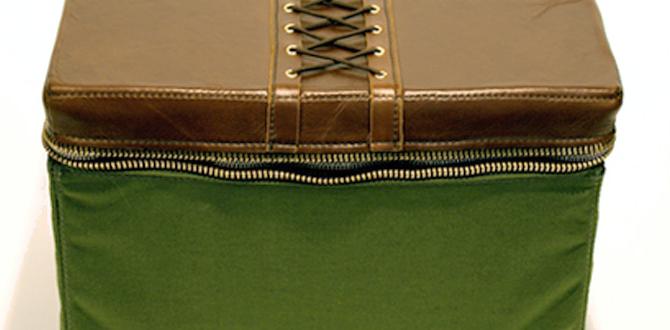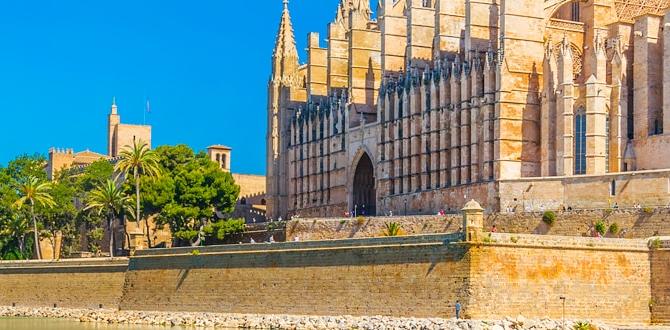Discover Agra on Foot: Essential walkable routes and maps for a relaxed, immersive experience of the Taj Mahal city. Plan your adventure with our easy-to-follow guide for stress-free exploration.
Agra, a city steeped in history and home to one of the world’s most iconic landmarks, the Taj Mahal, can be a treasure trove waiting to be explored on foot. While driving between major sights is common, many travelers find that wandering through its lanes offers a more authentic and personal connection to the city’s soul.
But where do you even begin? Navigating a new city can feel overwhelming, especially when you’re aiming for a leisurely pace. This guide is designed to take the guesswork out of it, offering you curated walkable routes and practical map advice so you can soak in Agra’s charm without a hitch. We’ll cover everything from essential preparation to specific routes that reveal the city’s hidden gems.
Why Explore Agra on Foot?
Walking through Agra isn’t just about saving on auto-rickshaw fares; it’s about experiencing the pulse of the city. You’ll notice the intricate details on buildings, hear the daily hum of local life, and perhaps stumble upon a delightful café or a bustling market you’d otherwise miss.
It allows for spontaneous detours and a deeper appreciation of the architecture and culture. Plus, for those who appreciate a bit of exercise while traveling, it’s a fantastic way to stay active. Imagine the stories etched into the very stones beneath your feet as you tread pathways that have seen centuries of footsteps!
Essential Preparation for Your Agra Walks
Before you lace up your walking shoes, a little preparation goes a long way. Agra can get warm, and staying hydrated and comfortable is key to enjoying your explorations.
Comfortable Footwear: This is non-negotiable. Choose well-worn, supportive shoes. Sneakers or sturdy walking sandals are ideal.
Lightweight Clothing: Opt for breathable fabrics like cotton or linen. Loose-fitting clothes allow for better air circulation. Consider clothing that covers your shoulders and knees out of respect for local customs, especially when visiting religious sites.
Hydration: Carry a reusable water bottle. Staying hydrated is crucial, especially during warmer months. You can refill it at hotels or reliable water outlets.
Sun Protection: A wide-brimmed hat, sunglasses, and sunscreen are your best friends. The sun can be intense.
Navigation Tools: While this guide provides routes, having offline maps downloaded on your smartphone (like Google Maps or Maps.me) is highly recommended. A physical map can also be a good backup.
Snacks: Keep a few energy bars or dry fruits handy for when hunger strikes between meals.
A Small Backpack: To carry your essentials – water, snacks, camera, sunscreen, and any souvenirs.
Hand Sanitizer & Wipes: Always useful for keeping clean on the go.
Small Cash: For local purchases or small tips.
Understanding Agra’s Layout and Key Areas
Agra is broadly divided by the Yamuna River. The most famous monuments, including the Taj Mahal and Agra Fort, are located on the south bank. The areas around these historical sites are where most tourists stay and explore. Understanding this basic geography helps in planning your walks.
The historic heart of Agra is rich with Mughal architecture and bustling bazaars. Newer areas have developed further away, offering modern amenities. For walkable exploration, focusing on the areas around the main attractions is most rewarding.
Agra Walkable Route 1: The Taj Mahal & Mehtab Bagh Experience
This route is designed for maximum impact, allowing you to witness the Taj Mahal from different perspectives and experience the tranquility surrounding it. It’s best done in the early morning or late afternoon to avoid the heat and crowds, and for the best light.
Starting Point: Southern Gate of Taj Mahal
Ending Point: Mehtab Bagh
Distance: Approximately 2-3 km (depending on detours)
Time: 2-3 hours (including time spent at each location)
Steps:
1. Morning at the Taj Mahal (South Gate): Begin your day by entering the Taj Mahal complex via the South Gate an hour before sunrise or shortly after. Spend ample time exploring the monument and its gardens. This is a truly magical experience without the harsh midday sun.
2. Walk Towards Taj Ganj: After exiting the Taj Mahal, explore the immediate vicinity. The lanes of Taj Ganj offer glimpses of local life and small shops that cater to tourists.
3. Head Towards Eastern Gate/Artisan Villages: Make your way towards the Eastern Gate and explore the surrounding lanes. You might find artisans working on marble inlay, a craft famous in Agra.
4. Stroll Along the Yamuna River Bank: From near the Eastern Gate, you can find paths that lead towards the riverbank. This offers a different, more serene viewpoint of the Taj Mahal.
5. Cross to Mehtab Bagh: To reach Mehtab Bagh, you will need to take a short auto-rickshaw or taxi ride across the Yamuna River. There isn’t a direct walkable path across the river from the Taj Mahal site itself. The goal here is to experience the sunset view of the Taj Mahal from across the river.
6. Explore Mehtab Bagh: This Mughal-era garden complex is perfectly aligned with the Taj Mahal and offers a breathtaking panoramic view, especially during sunset. It’s a peaceful place to reflect on the day’s sights.
Tips for this Route:
Purchase Taj Mahal tickets online in advance to save time.
Consider hiring a guide inside the Taj Mahal complex for deeper insights.
Be mindful of the heat; start early.
The walk from the Taj Mahal side to the point where you’d catch transport to Mehtab Bagh can be varied. Stick to well-lit, populated paths if unsure.
Agra Walkable Route 2: The Agra Fort and Mehtab Bagh Riverside Trail
This route focuses on the grandeur of Agra Fort and a more extended, scenic riverside walk, culminating in a sunset view of the Taj Mahal.
Starting Point: Agra Fort
Ending Point: Mehtab Bagh
Distance: Approximately 4-5 km
Time: 3-4 hours
Steps:
1. Explore Agra Fort: Begin your day at the magnificent Agra Fort, a UNESCO World Heritage site. Dedicate at least 2-3 hours to explore its palaces, audience halls, and imposing ramparts.
2. Exit and Head North: After exploring the fort, exit towards the north. You’ll be walking away from the main tourist hub and towards the river.
3. Riverside Path: Locate the path that runs alongside the Yamuna River, heading east. This path can be less developed in sections, so assess your comfort level and stick to more established routes if needed. You’ll pass local villages, agricultural land, and likely see plenty of birdlife.
4. Indian Army Cantonment Area: As you walk east along the river, you will pass through or near the Indian Army Cantonment area. Be aware of any restrictions or signs.
5. Reach Mehtab Bagh: Continue following the riverbank until you reach the vicinity of Mehtab Bagh. You may need to cross a smaller road or use a footbridge to access the Mehtab Bagh entrance.
6. Sunset at Mehtab Bagh: Enjoy the stunning sunset views of the Taj Mahal from Mehtab Bagh. This provides a unique perspective, especially for photography.
Table: Agra Fort and Riverside Trail Highlights
| Location | Key Attractions | Walking Time (Approx.) | Notes |
| Agra Fort | Diwan-i-Aam, Diwan-i-Khas, Jahangiri Mahal | 2-3 hours | Entry fee applies; wear comfortable shoes. |
| Riverside Path | Local life, birdwatching, Yamuna River views | 1-2 hours | Path can be uneven; stay aware. |
| Mehtab Bagh | Taj Mahal sunset view, gardens, historical site | 1 hour | Entry fee applies; ideal for photography. |
Tips for this Route:
This route is more adventurous and requires a good sense of direction.
Inform someone of your walking route and expected return time.
Be prepared for less developed paths, especially as you get closer to Mehtab Bagh from the west.
Consider using a local guide for the riverside portion if you want to learn about the local environment.
Agra Walkable Route 3: Old Agra Bazaar & Kinari Bazaar Exploration
This route is for the intrepid explorer looking to dive into the vibrant heart of Agra’s traditional commerce. It’s a sensory overload in the best possible way!
Starting Point: Jama Masjid
Ending Point: Sadar Bazaar (or revisit Jama Masjid)
Distance: Approximately 1-2 km (but you’ll wander extensively)
Time: 2-4 hours (depending on shopping and exploration)
Steps:
1. Start at Jama Masjid: Begin your walk at the historic Jama Masjid, a beautiful mosque dating back to the Mughal era. Admire its architecture and the lively atmosphere surrounding it.
2. Enter Kinari Bazaar: Directly opposite Jama Masjid lies Kinari Bazaar. This narrow, winding lane is famous for its wedding items, textiles, decorative pieces, and handicrafts.
3. Wander the Lanes: Get lost (pleasantly!) in the maze of Kinari Bazaar. Explore stalls selling everything from glittering bangles and traditional wedding attire to intricate marble inlay work and leather goods.
4. Explore Perfume Alley (Ittar Gali): If you venture deeper into the old city bazaar, you might find areas dedicated to attar (traditional perfumes).
5. Connect to Sadar Bazaar: Continue your exploration towards Sadar Bazaar, Agra’s main market. This area is broader and offers a mix of clothing, electronics, food stalls, and general merchandise. It’s a good place to find a variety of local products.
6. Foodie Delights: Both Kinari Bazaar and Sadar Bazaar are excellent places to sample local street food. Try Petha (a local sweet), Dal Moth, and various chaats.
7. Optional: Return to Jama Masjid: You can loop back to Jama Masjid for a final view or depart from Sadar Bazaar depending on your onward travel plans.
Table: Bazaar Exploration Highlights
| Bazaar Name | Specialty | Best For |
| Kinari Bazaar | Wedding items, textiles, embroidery, handicrafts, jewelry, marble inlay products | Traditional crafts, unique souvenirs, vibrant atmosphere, sensory experience |
| Sadar Bazaar | Clothing, footwear, electronics, spices, general merchandise, street food | Wider variety of goods, local shopping, street food, modern and traditional items |
| Ittar Gali | Traditional perfumes (attar) | Authentic scents, unique gifting options |
Tips for this Route:
This is a bustling area. Keep your belongings secure.
Bargaining is expected in the bazaars. Start with a price significantly lower than the asking price.
Be polite and respectful when interacting with shopkeepers.
Wear comfortable shoes as you’ll be walking on uneven surfaces and potentially crowded paths.
Try local snacks – it’s part of the experience!
Interactive Maps & Navigation Resources
Having a good map is crucial for any walking tour. Here are some resources and tips:
Google Maps: Download offline maps for Agra. This allows you to navigate even without an internet connection. You can pin your starting point, destination, and even intermediate points of interest.
Maps.me: Another excellent offline map application that is very popular with travelers. It’s often more detailed for smaller streets and pathways than pre-loaded phone maps.
Local Guides: While not a map, a good local guide can be invaluable. They know the best routes, shortcuts, and can offer historical context. Many are available for booking through reputable tour agencies or hotel concierges.
Physical Maps: If you prefer a tangible guide, pick up a local tourist map from your hotel or a bookshop. These can provide a good overview and often mark key attractions.
External Resource: For official information on Agra’s heritage sites and their accessibility, the Archaeological Survey of India (ASI) website can be a valuable resource, though it won’t provide specific walking routes.
Safety and Etiquette on Agra’s Streets
Walking in a foreign city often comes with considerations for safety and local customs. Agra is generally safe for tourists, but a little awareness goes a long way.
Safety Tips:
Stay Aware: Pay attention to your surroundings, especially in crowded markets.
Guard Your Valuables: Keep your money, phone, and any other valuables in a secure place, like a money belt or a front pocket.
Avoid Unfamiliar Areas at Night: If you’re walking after dark, stick to well-lit and populated streets.
Trust Your Instincts: If a street or situation feels unsafe, don’t hesitate to turn back or find a more visible spot.
Be Wary of Scams: While most people are genuine, be cautious of unsolicited offers of help or guided tours that seem too good to be true.
Etiquette Tips:
Dress Modestly: Especially when visiting religious sites like Jama Masjid or passing through local neighborhoods. Covering shoulders and knees is respectful.
Ask Before Photographing: Always ask for permission before taking pictures of people, particularly women and children.
Respect Religious Sites: Remove your shoes before entering mosques or temples. Dress appropriately.
Bargaining: It’s a part of the culture in the bazaars, but do so with a smile and politeness. Don’t haggle aggressively over very small amounts.
Eating: While street food is tempting, ensure you choose vendors who appear clean and popular. Carry hand sanitizer.
Beyond the Main Routes: Discovering Hidden Gems on Foot
Agra’s charm isn’t limited to its famous monuments. The real magic often lies in the unexpected discoveries made during leisurely walks.
Local Neighborhoods: Take a slight detour from the main tourist paths to explore quieter residential areas. You’ll see how locals live, perhaps find small temples or mosques, and get a feel for the everyday rhythm of the city.
Artisan Workshops: Agra is renowned for its marble inlay work (pietra dura), a craft popularized during the Mughal era. Look out for workshops where you can see artisans at work. Some are located in areas slightly off the main roads, like near Taj Ganj.
Culinary Adventures: Beyond the famous Petha, Agra has a rich street food scene. Wandering through local markets can lead you to delicious chaats, samosas, and other local delicacies. Don’t be afraid to try something new!
Old Havelis and Architecture: The older parts of Agra still house beautiful, though sometimes neglected, old havelis (mansions) that showcase traditional Indian architecture. Keep an eye out for intricate doorways and courtyards.
Conclusion
Exploring Agra on foot unlocks a richer, more intimate travel experience. By following these curated routes and keeping our practical tips in mind, you can confidently step out and discover the magic of this historic city.
From the awe-inspiring grandeur of the Taj Mahal and Agra Fort to the vibrant chaos of its ancient bazaars, every step you take can lead to a memorable encounter. Remember, the best journeys often unfold when you allow yourself the time to wander and observe. So, pack your essentials, put on your comfortable shoes, and get ready to create your own unforgettable Agra story, one walkable mile at a time. Happy travels!
Frequently Asked Questions
Q1: Is Agra safe for walking tours?
A1: Yes, Agra is generally safe for walking tours, especially in well-trafficked areas and during daylight hours. However, like any city, it’s important to stay aware of your surroundings, secure your valuables, and avoid isolated areas at night.
Q2: What is the best time of day to explore Agra on foot?
A2: The best times of day are early mornings (sunrise) and late afternoons/evenings (before sunset). This avoids the peak heat and offers beautiful lighting for sightseeing and photography.
Q3: Do I need a special map for Agra walkable routes?
A3: While specific “walkable route maps” aren’t readily available, using standard navigation apps like Google Maps or Maps.me and downloading offline maps is highly effective. This guide provides conceptual routes; app-based navigation will guide you step-by-step.
Q4: What should I wear for walking in Agra?
A4: Wear comfortable, breathable clothing and supportive walking shoes. Lightweight fabrics, hats, and sunglasses are recommended due to the climate. Dressing modestly is also advisable, especially when visiting religious sites.
Q5: Are there many shaded walking paths in Agra?
A5: Shaded paths can be limited, especially in open areas like around monuments and in markets. Your best bet for shade is within monument complexes that have gardens or inside covered bazaars. Carry water and sun protection regardless.
Q6: How can I find local street food while walking?
A6: Explore the larger bazaar areas like Kinari Bazaar and Sadar Bazaar. Look for stalls that are busy with locals, as this is usually a sign of good and safe food. Always use hand sanitizer after eating street food.
Q7: What if I get lost while walking?
A7: If you get lost, don’t panic. Use your offline map app, ask for directions from shopkeepers, police personnel, or hotel staff. In emergencies, autorickshaws can help you get back to a main road or your hotel.







